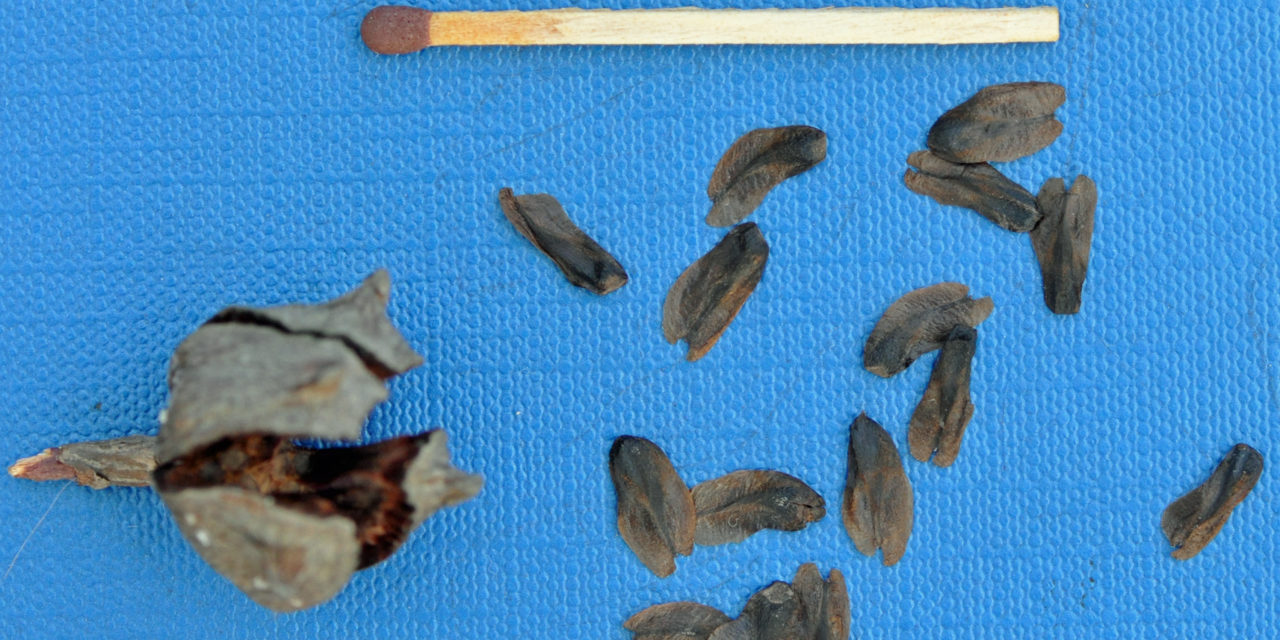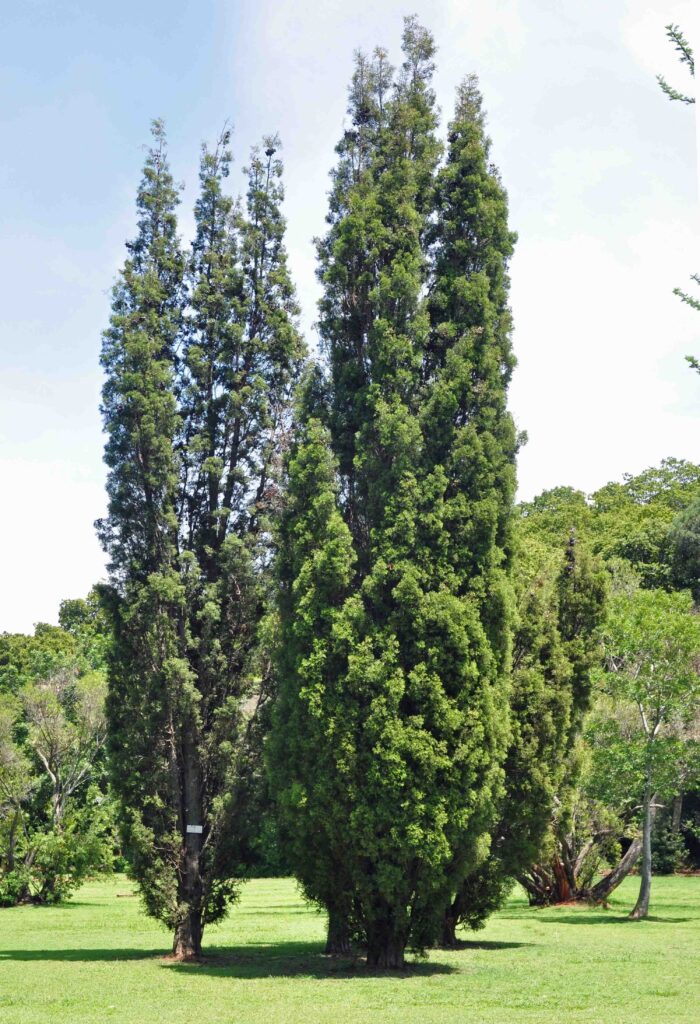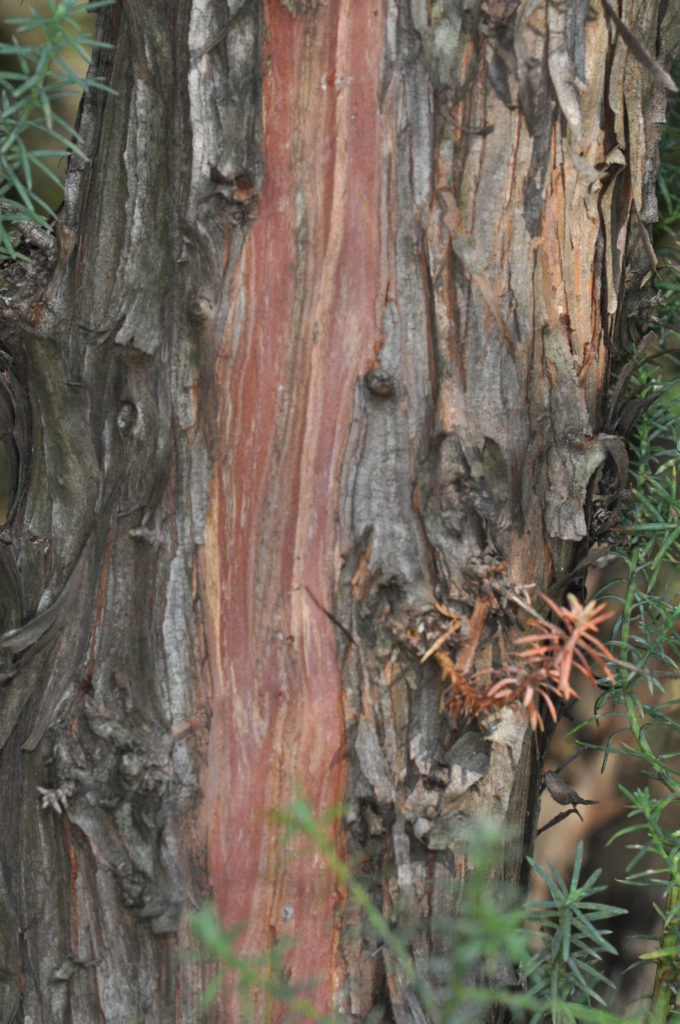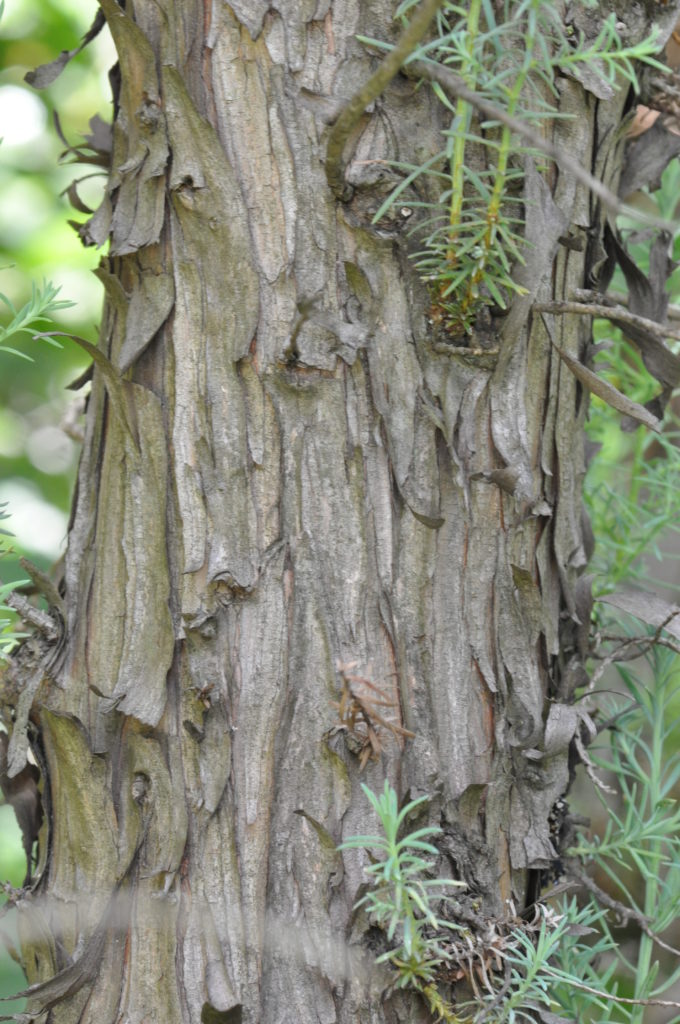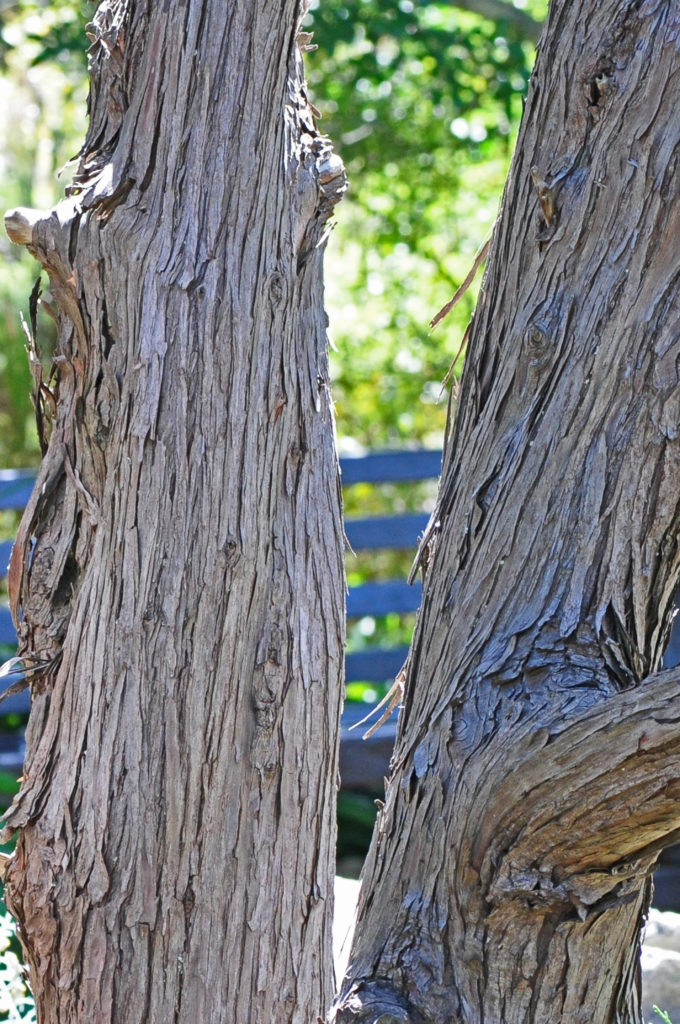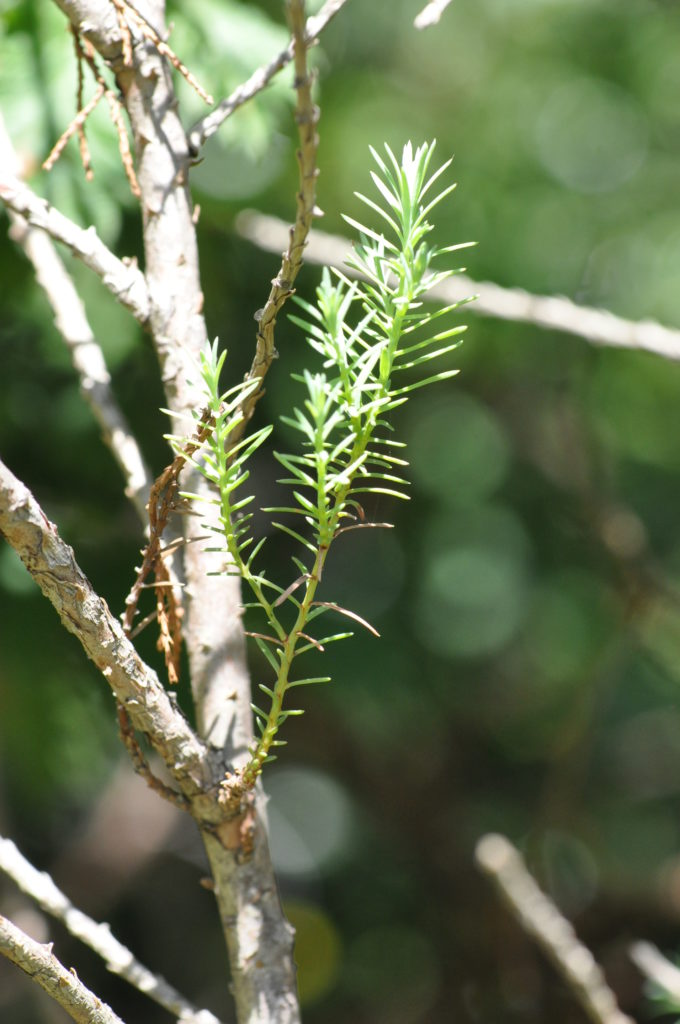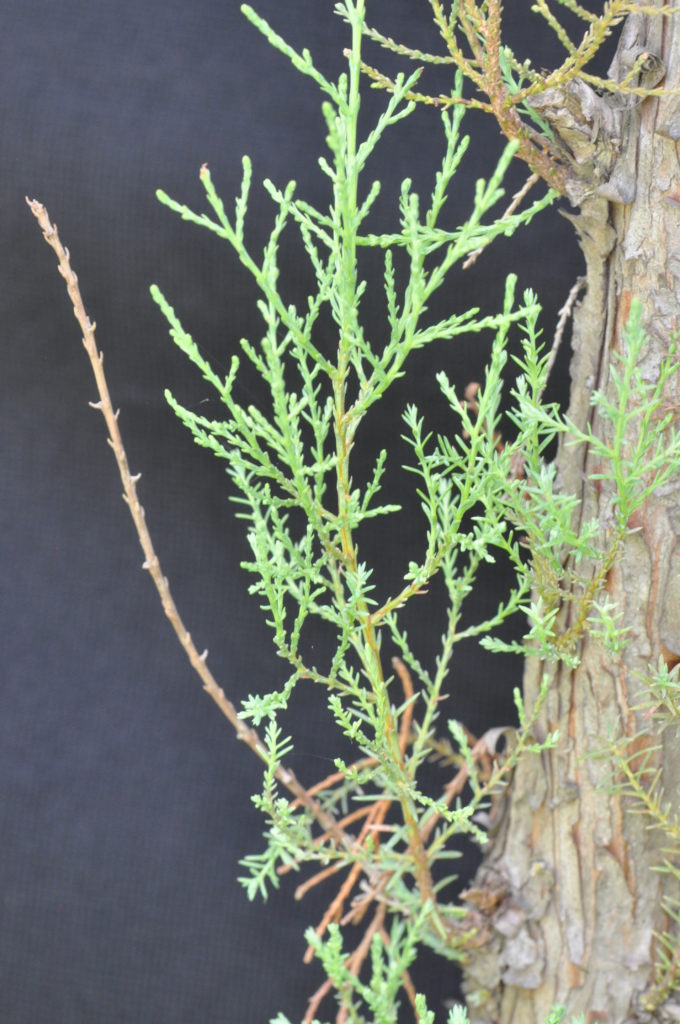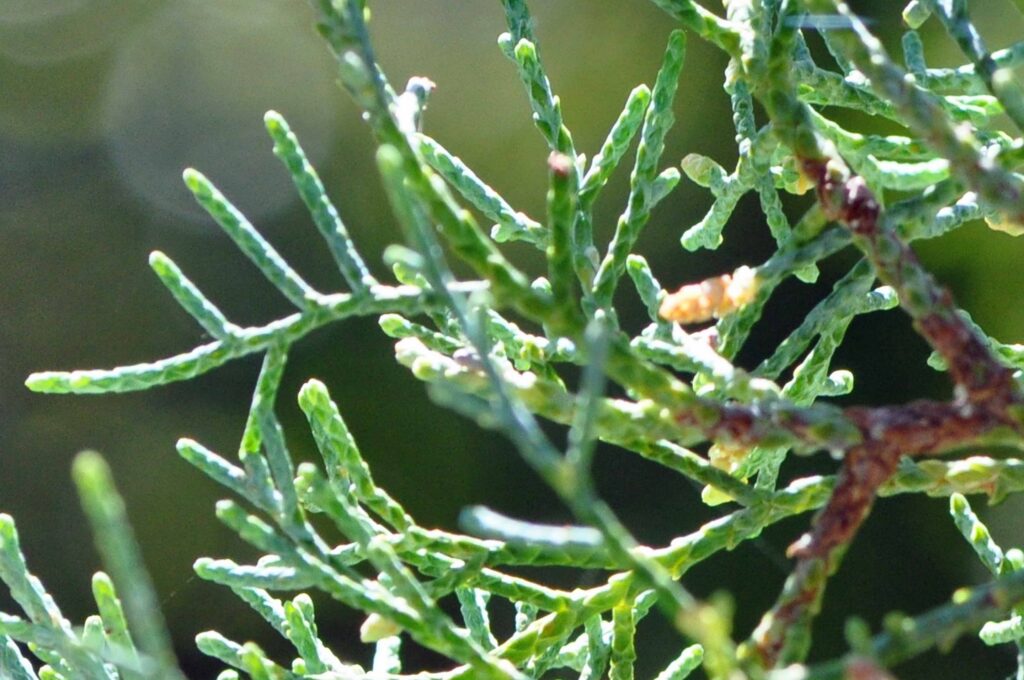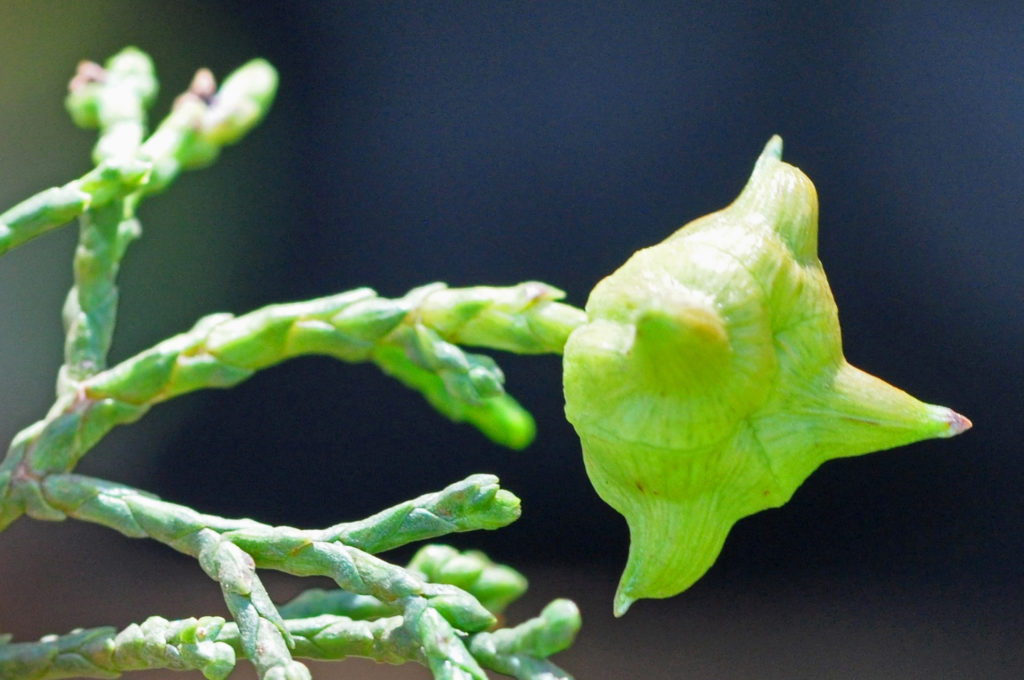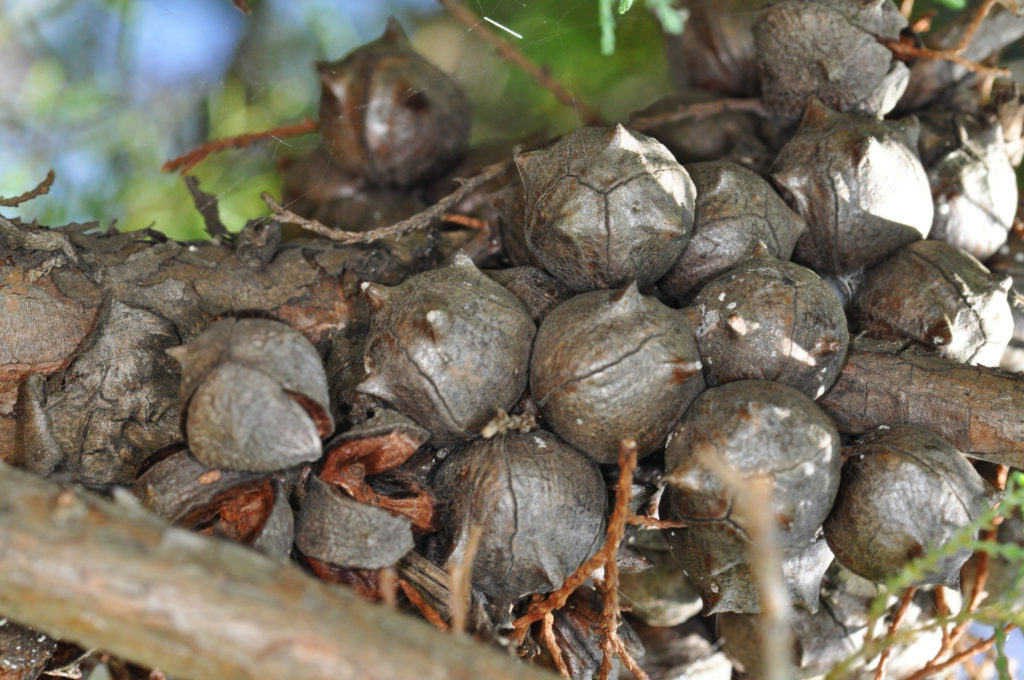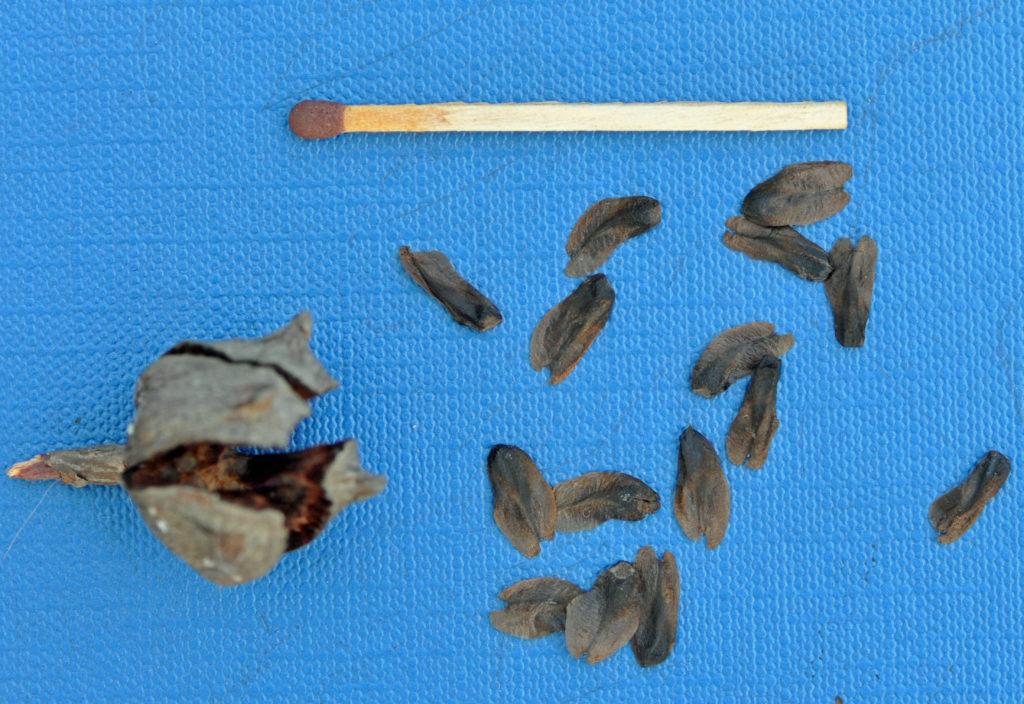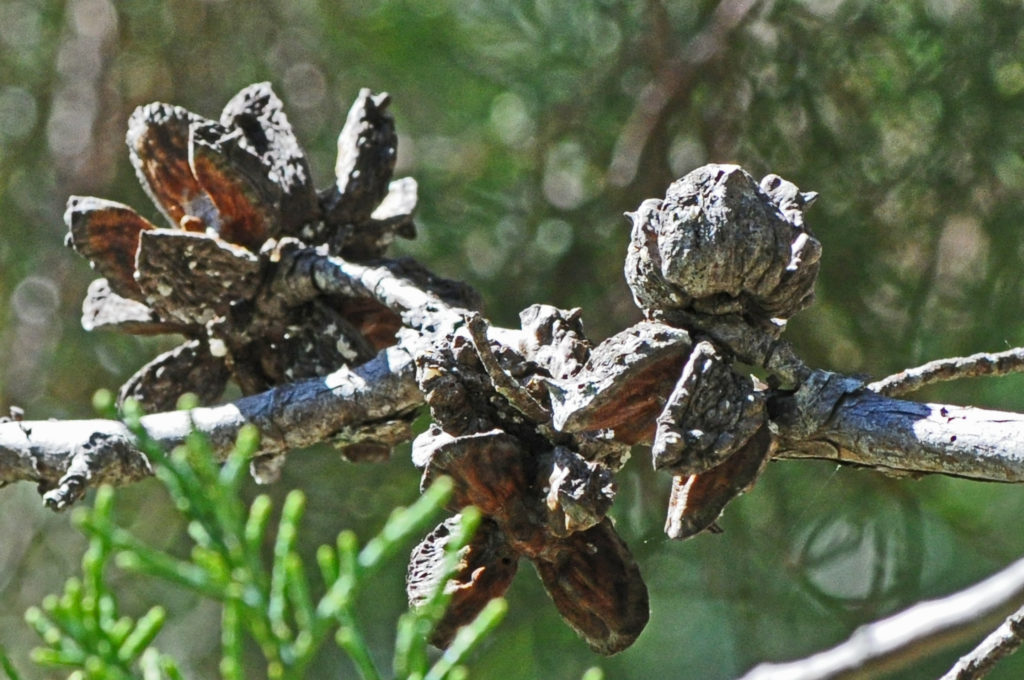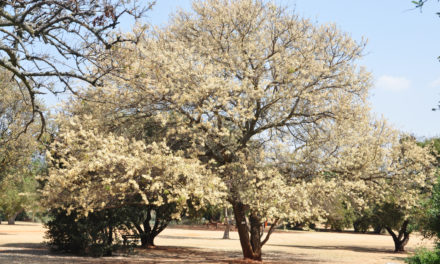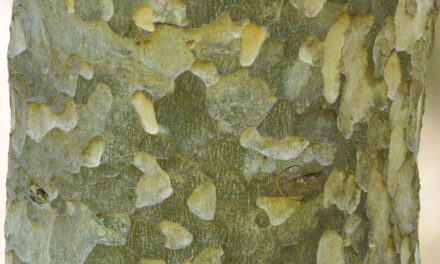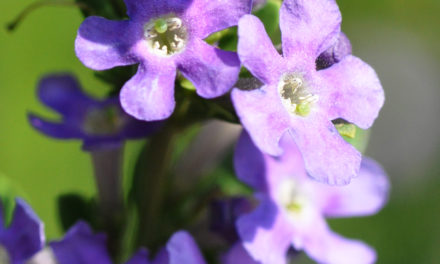General Info – summary
This monoecious bush/Tree has aromatic resin reddish underbark & may reach 15m high locally. Young needle-like Leaves are light green. Older scale-like leaves are appressed & near branch ends. Each of the scales on the small Male cones contains 4 pollen sacs with wind dispersed pollen. In the Female cones, the 4 equal sized woody & single whorled scales open for pollination, then again for wind seeds dispersal.
Description
Widdringtonia nodiflora
Previous Names: Brunia nodiflora, Callitris commersonii, Callitris cupressoides, Cupressus cornuta, Juniperus capensis, Pachylepis commersonii, Pachylepis cupressoides, Thuja cupressoides, Widdringtonia caffra, Widdringtonia commersonii, Widdringtonia cupressoides, Widdringtonia dracomontana, Widdringtonia mahoni, Widdringtonia natalensis, Widdringtonia nodiflora, Widdringtonia stipitata, Widdringtonia wallichii, Widdringtonia whytei.
SA tree No. 20.
Common names: (Afr) Bergsapree, Bergsipres. (Eng) Cape Cypress, Cedar, Mountain Cedar, Mountain Cypress. (isiZulu) Unwele-lwe-entaba, Unwelelwentaba. (Tshivenda) Thaululo. Cedar refers to large evergreen, cone-producing plants that usually yield fragrant, durable trees.
Family: Cupressaceae (the conifer and cypress family) has about 28 genera and in excess of 130 species. This family is part of the Gymnosperm (naked seeded) group and has Trees that are usually evergreen, monoecious with male and female cones in the same tree. The initially small and needle-like Leaves mature into being narrow and scale-like. They collectively hide the young stem surface. Reproductive structures lack a perianth (calyx and corolla). The Male cones are up to 2cm long and pollen grains lack wings or airbladders and are situated on the abaxial surface of the scales. In the Female cones, the scales have ovules on the adaxial side. The usually small Seeds are generally in woody, now gaping, leathery or fleshy cones. The seeds tend to have narrow wings.
Name derivation: Widdringtonia – named after Captain Widdrington (1787-1856) of the Royal Navy who published a book on European pines in the 19th century. nodiflora – bearing “flowers” at the nodes. The numbers of species in the genus Widdringtonia has been reduced and currently stands at three. The other 2 are W. schwarzii and W. cedarbergensis.
Conservation: National Status: L C: (Least Concern). Assessment: 2004 (J.E. Victor). These trees are slightly threatened due to fires and human use.
Tree
The initially narrow and conical young Tree spreads slightly with age becoming column-like and is up to 15m high in South Africa (photo 657). They may be much taller to the north of South Africa (up to 45m). This plant is often a bush. The grey to brown Trunk is straight, slender and thinly longitudinally fissured (photo 64 & 193). This produces thin long flakes exposing the reddish under Bark (photo 874). The bark may flake in long narrow strips (photo 64). After a fire, the plant will survive by coppice growth (if young tree stems are cut or burn down to near ground level it causes regrowth from the stump or roots). This is a distinctive characteristic. All indigenous trees in the genus Widdringtonia have aromatic resin.
- 657. 2106/11/22. Pretoria NBG. Photo: David Becking.
- 874. 2016/09/06. Walter Sisulu NBG. Photo: David Becking.
- 64. 2015/11/24. Walter Sisulu NBG. Photo: David Becking.
- 193. 2013/03/25. Kirstenbosch NBG. Photo: David Becking.
Leaves
On this evergreen tree, two types of green hairless Leaves occur at the ends of branches. Young leaves are 10-20mm long and light, bright green and needle-like (photo 130). These leaves are up to 2o x 2mm and sub-spirally arranged. The 2mm long scale-like adult leaves appear after a few years. They are in opposite (usually) or decussate pairs (arranged in pairs each at right angles to the next pair above or below i.e. rotated 90 degrees along the stem when viewed from above). These scale-like leaf pairs are narrowly oblong and appressed (closely and flatly pressed against but not joined) to the young stems (photo 194). These leaves become dark green to blue-green and are up to 2mm long. These appressed leaves tend to obscure young stems.
- 130. 2015/12/01. Walter Sisulu NBG. Photo: David Becking.
- 62. 2015/11/24. Walter Sisulu NBG. Photo: David Becking.
- 194. 2013/03/25. Kirstenbosch NBG. Photo: David Becking.
Reproductive Structures
This monoecious (here the separate male and female cones occur on the same plant) Tree has Cones lacking a perianth (the 2 floral envelopes considered together; a collective term for the calyx and corolla). Yellowish, numerous and terminal MALE cones are small – 2-4mm long and usually found at the ends of short lateral branchlets. Each male cone usually has 6 pairs of peltate (shield-shaped) Scales that are coriaceous (leathery) and decussate (arranged in pairs each at right angles to the next pair above or below). Usually, 4 pollen sacs are located at the base of each scale.
Pollen is produced in the anthers (as normal). When the flowers are still buds the anthers open (dehisce) just before the flowers do and the pollen is transferred, to the pollen presenters where it sticks. The transfer happens because the two organs (anther and stylar complex (style and part of the stigma)) are adjacent in the bud. Only when the flower opens is the pollen removed by a pollinator and the stigma becomes receptive. This is referred to as secondary pollen presentation because the pollen presenter is not where the pollen was produced. A similar thing happens in the protea family.
The unopened, initially silvery green and ovoid FEMALE cones (photo 651) occur on elongated shoots. The occasionally 5-6 but usually 4 equally sized oblong Scales or valves on each cone (photo 687) are arranged in a single whorl. These cones occur singly (photo 651) or in clusters (photo 131). At maturity, the faces are smooth or wrinkled with short warty knobs often closed to the apex – photo 687 & 196). The cones open widely at the apex to allow wind pollination. They the then close and finally open again to expose and release the small, dark brown/black, red winged, wind-dispersed Seeds (photo 687). These seeds are usually ovoid or trigonous (triangular in cross section). The roughly spherical cones become dark brown, woody and up to 2,5cm wide. Cones in variable development stages may be visible throughout the year. (March ++).
- 651. 2016/11/22. Pretoria NBG. Photo: David Becking.
- 131. 2015/12/01. Walter Sisulu NBG. Photo: David Becking.
- 687. 2017/10/30. Walter Sisulu NBG. Photo: David Becking.
- 196. 2013/03/25. Kirstenbosch NBG. Photo: David Becking.
Distribution & Ecology
All 4 species of Widdringtonia are endemic in southern Africa. These frost resistant Trees often grow in groups on exposed rocks and gullies of mountains. The trees are common on ridges at high altitudes (up to 2 600m) and on sides of mountains like the Soutpansberg mountains (up to 1 747m) in Limpopo. Due to slow development and harvesting, really big trees are now difficult to find. The tree contains an aromatic, inflammable resin, which makes them susceptible to fire and the trunk may explode if the heat is great enough. The future of these trees in fire prone areas is aided by Coppice development. This occurs when young trees are cut or burned down to near ground level and causes regrowth from the stump or roots). This is a distinctive characteristic. Widdringtonia nodiflora occur from the Western Cape (including Table Mountain and in the mountains near Kirstenbosch), Eastern Cape – north of the Storms River, up the eastern escarpment (including on the mountainsides of Giant’s Castle and Cathedral Peak and Royal Natal National Park in Kwazulu-Natal) to the Soutpansberg, Swaziland, Mozambique, through Zimbabwe to Malawi (here they may reaches 40m in height). These trees do not occur in Namibia.
Ethnobotany
Propagation is through growing seeds, but seed development is very slow. The seeds can remain on the Tree for a long time. Dispersal may only occur when the tree is damaged. After a fire, they may germinate rapidly to recolonize the area. I took a cone home and several months later, I noticed the cone had opened and released the seeds (photo 687 under reproductive structures). The Wood has a natural soft sheen and is resinous, pleasantly fragrant and the tree yields aromatic oil. The timber is very durable – even outdoors. The wood is easy to work and makes good, tough roofing shingles. Uses also include hut construction and furniture making. A potted plant can make a good container plant and create an attractive re-usable South African Christmas tree. The wood has a natural soft sheen. The Pollen is allergenic.
References
Boon, R. 2010. Pooley’s Trees of eastern South Africa. Flora and Fauna Publications Trust, Durban.
Boon, R. 2024. Pollin presenter explanation.
Burrows, J.E., Burrows, S.M., Lotter, M.C. & Schmidt, E. 2018. Trees and Shrubs Mozambique. Publishing Print Matters (Pty) Ltd. Noordhoek, Cape Town.
Coates Palgrave, M. 2002. Keith Coates Palgrave Trees of Southern Africa, edn 3. Struik, Cape Town.
Lawrence, G. H. M, 1951. Taxonomy of Vascular Plants. The Macmillan Company, New York. Tenth Printing 1965.
Palmer, E. & Pitman, N. 1972. Trees of southern Africa. Balkema, Amsterdam, Cape Town.
Schmidt, S. Lotter, M. & McCleland, W. 2002. Trees and Shrubs of Mpumalanga and the Kruger National Park. Jacana, Johannesburg.
van Wyk, B. & van Wyk, P. 1997 Field guide to Trees of Southern Africa. Struik, Cape Town.
Victor, J.E. 2004. Widdringtonia nodiflora (L.) Powrie. National Assessment: Red List of South African Plants version. Accessed on 2024/04/07.
http://www.biodiversityexplorer.org/plants/coniferophyta/cupressaceae/widdringtonia_nodiflora.htm
https://en.wikipedia.org/wiki/Widdringtonia_nodiflora
http://www.plantzafrica.com/plantwxyz/widdnod.htm
http://www.conifers.org/cu/Widdringtonia_nodiflora.php
https://en.wikipedia.org/wiki/Cupressaceae
https://www.britannica.com/plant/Cupressaceae
http://tropical.theferns.info/viewtropical.php?id=Widdringtonia+nodiflora

